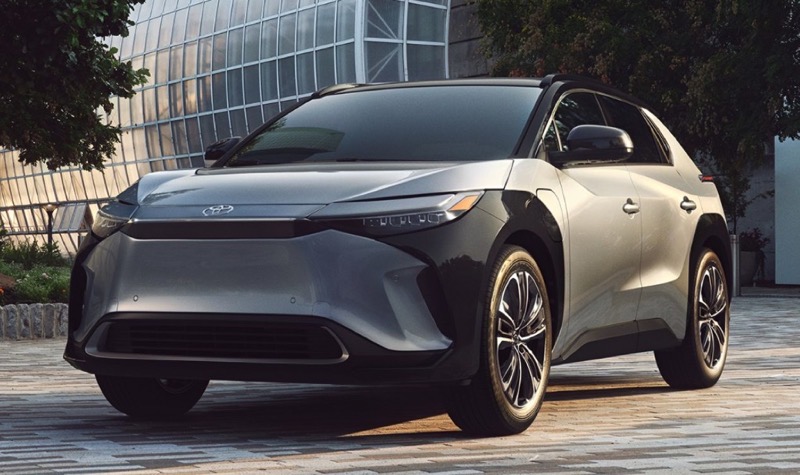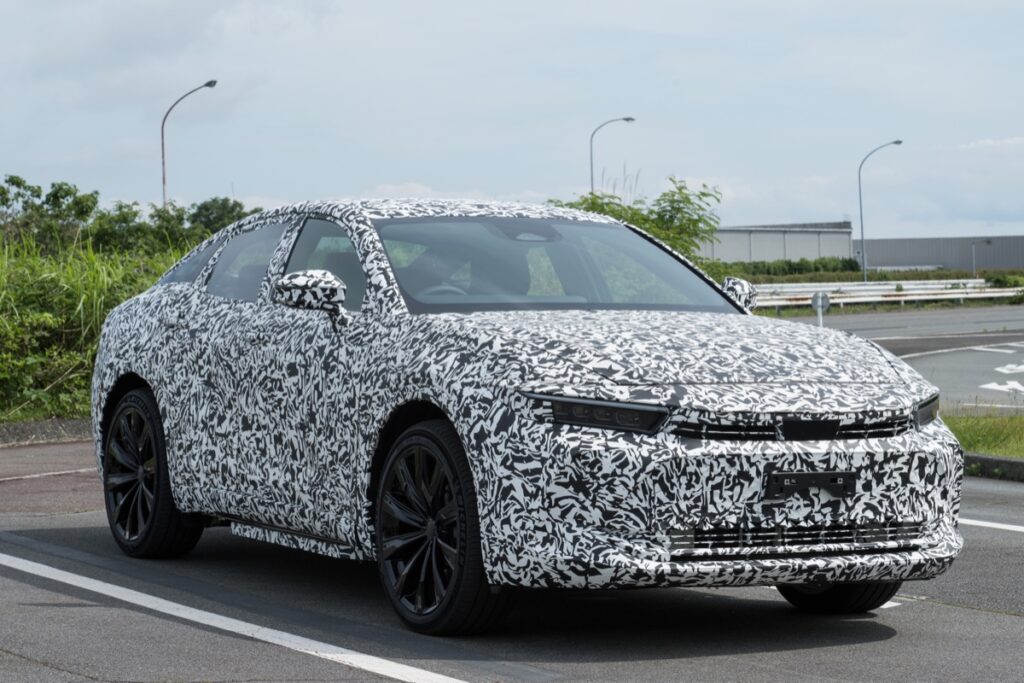
Toyota Unveils New Battery Tech, Giga Casting and More in EV Push

Toyota has announced its plans to launch a suite of high-performing battery technologies by 2026. The automotive giant is focusing on developing an advanced square battery that would increase the cruising range of the next-generation Battery Electric Vehicle (BEV) to an impressive 1,000 km.
The battery is being hailed as the heart of the BEV, and Toyota is committed to developing batteries that meet and exceed customer expectations. The new square battery technology is expected to enhance vehicle efficiencies such as aerodynamics and weight reduction while reducing costs by 20% compared to the current bZ4X model. It also promises a quick charge time of under 20 minutes.
In addition to the performance version of the square battery, Toyota is also developing more cost-effective batteries to foster the widespread adoption of BEVs. The “popularization version” battery, featuring a bipolar structure and utilizing inexpensive lithium iron phosphate (LFP), is expected to see practical use between 2026 and 2027. This version aims for a 20% increase in cruising range, a 40% reduction in cost, and quick recharging in 30 minutes or less.
Toyota’s innovation drive doesn’t stop here. The automaker is concurrently developing a high-performance bipolar lithium-ion battery, combining a bipolar structure with a high nickel cathode. This high-performance version, scheduled for practical use in 2027-2028, will further surpass the performance version of the square battery, offering a 10% increase in cruising range, a 10% reduction in cost, and a quick charge time of under 20 minutes.
Moreover, the company is accelerating its development of all-solid-state batteries for BEVs, a highly-anticipated innovative battery type, and striving for commercialization in 2027-2028. After a breakthrough that overcame the longstanding challenge of battery durability, Toyota is now focusing on developing a mass production method. These batteries are expected to improve cruising range by 20% compared to the performance version of the square battery, while cost considerations are under scrutiny. An advanced specification, aiming for a 50% improvement in cruising range, is also under research and development concurrently.
These innovative technologies from Toyota, developed in collaboration with Prime Planet Energy & Solutions Corporation and Toyota Industries Corporation, mark a significant step forward in making the company’s vision of next-generation EVs a reality.
Also, Toyota details its ambitious plans to incorporate cutting-edge technology used in rockets into its battery electric vehicles (BEVs). In collaboration with Mitsubishi Heavy Industries, the company is set to develop a novel technology to reduce aerodynamic drag, irrespective of the vehicle’s shape, thereby augmenting the allure of their BEVs. This initiative, along with battery innovation, is geared towards extending the cruising range by minimizing aerodynamic drag and enhancing the overall BEV product appeal.

Additionally, the automotive giant is revolutionizing its manufacturing process. It’s developing a ‘Giga Casting’ process, which enables high productivity integrated molding, considered the optimal shape by automakers—this is a page from the Tesla playbook. The process incorporates technology for integrated molding with aluminum die-casting, replacing what was traditionally made from dozens of sheet metal parts. The structural design is being reviewed for simplicity and slenderness after meticulous analysis of the precision-crafted casting technology. True to Toyota’s Production System (TPS) philosophy, this process reduces waste, parts, and overall processes.
Simultaneously, Toyota is breaking new ground by eliminating the traditional “conveyor” concept, with the introduction of a self-propelling assembly line. The automaker aims to create vehicles that can move autonomously to the next stage of the assembly process. The technology employs sensors and control systems at the factory side, communicating with wireless terminals mounted on the mass-produced vehicles to control them externally. The abolition of conveyors is expected to enhance factory layout flexibility, significantly reduce factory investment and lead time, and decrease the human resources needed for mass production preparation.
Furthermore, the company is exploring digital technology for manufacturing in its next-generation BEV plant. Giga casting and self-propelling assembly lines are set to be compatible with digitalization. The technology will be actively utilized in plant design, including process study and improvement, and aims to shorten mass production preparation lead time through reproduction accuracy at the 1mm error level.
Toyota also plans to transition to more efficient production lines using connected technology and autonomous inspections, among other methods. They intend to drastically change the manufacturing situation, in alignment with TPS concepts, significantly reducing production preparation lead time, production processes, factory investment for mass-produced vehicles, and overall fixed costs. These innovations are set to reshape the BEV production landscape, reflecting Toyota’s commitment to leading the charge in EV technology and manufacturing.

Toyota is pushing the envelope by developing compact ‘eAxle’ technology to improve the appeal of their battery electric vehicles (BEVs). The company plans to downsize essential components of the eAxle, such as the motor, gear train, and inverter, leveraging BluE Nexus, Aisin, Denso, and Toyota’s proprietary in-house technologies, honed through years of hybrid electric vehicle (HEV) development. This miniaturization allows for an extended cruising range, expanded cargo space, and reduced aerodynamic drag, contributing to heightened comfort and design aesthetics.
Additionally, the automotive giant is advancing next-generation semiconductor technology by developing silicon carbide (SiC) wafers for BEV inverters, which promise a 50% reduction in power loss. This next-gen material development stems from crystal growth research, poised to enhance BEV energy efficiency significantly. Toyota is adopting a gas method for this process, boasting crystal growth speed that’s ten times faster than the industry standard. The company is also developing the industry’s largest 8-inch wafer, promoting technology internalization within the Toyota Group.
The company is committed to leveraging their well-established manufacturing fundamentals to refine BEV product appeal further. The collective efforts of the Toyota Group to optimize the small eAxle and next-generation semiconductor technologies will undoubtedly boost the commercial viability of their BEVs under development.
On another front, Toyota is developing a ‘multi-pathway’ platform, enabling a diverse offering of electrified vehicles to meet varied customer needs. Demonstrating this technological capability, the company has converted the powertrain of the popular Crown model into a BEV, signaling their ability to provide an array of BEV models quickly. This multi-pathway platform allows Toyota to broaden their product lineup even before the introduction of next-generation BEVs, targeting a standard set of 1.5 million units by 2026.
It remains to be seen if Toyota can execute its ambitious EV plans, as so far its first EV offerings have been less than impressive. Toyota is dreaming big here if it hopes to “change the future of cars”. We still have yet to see some innovative Toyota software or self-driving tech that matches the likes of Tesla.